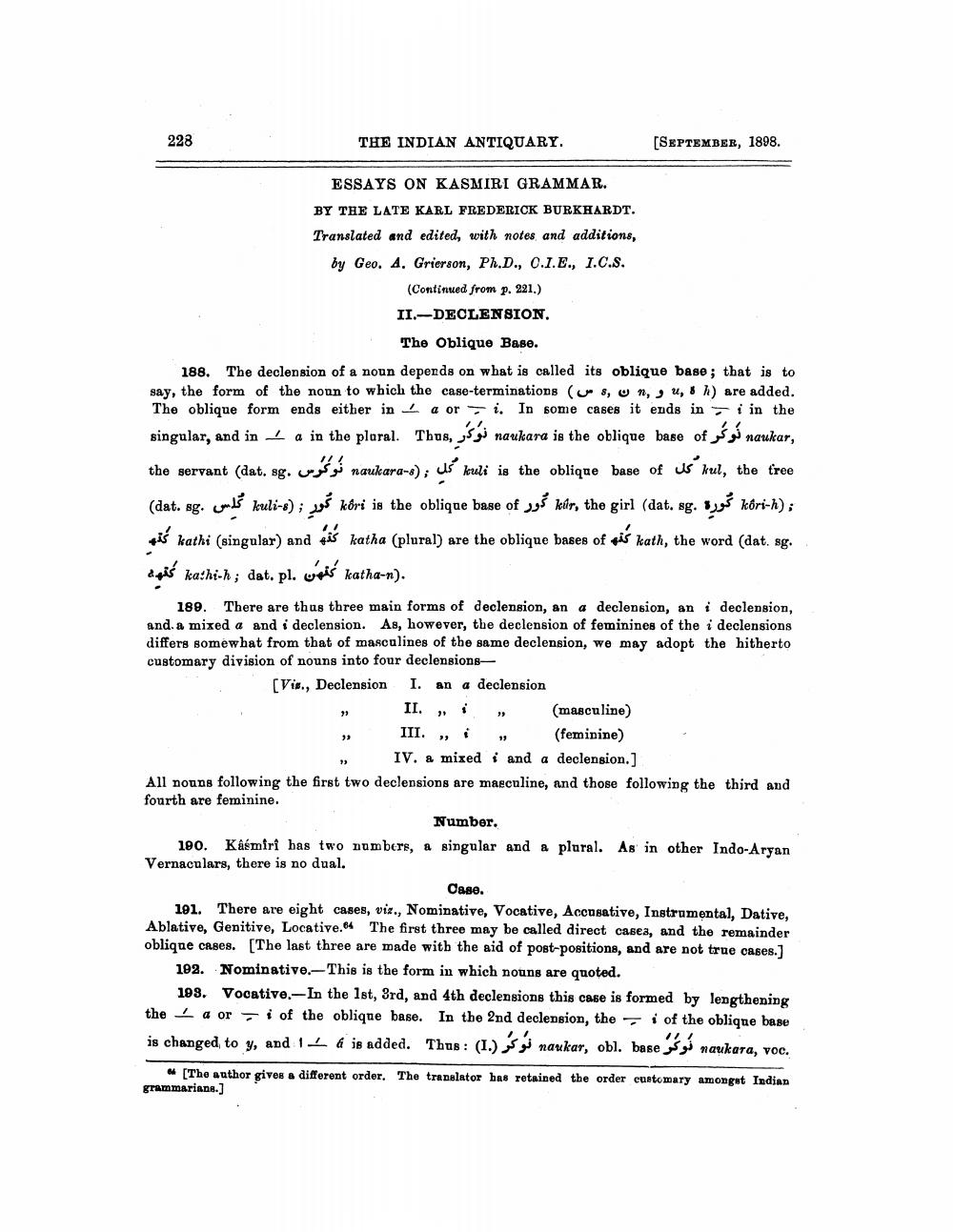________________
228
THE INDIAN ANTIQUARY.
[SEPTEMBER, 1898.
ESSAYS ON KASMIRI GRAMMAR. BY THE LATE KARL FREDERICK BURKHARDT. Translated and edited, with notes and additions, by Geo. A. Grierson, Ph.D., O.I.E., 1.C.S.
(Continued from p. 221.) II.-DECLENSION.
The Oblique Base. 188. The declension of a noun depends on what is called its oblique base; that is to say, the form of the noun to which the case-terminations (Ums, un,, u, h) are added. The oblique form ends either in a or i. In some cases it ends in = { in the singular, and in 1a in the plural. Thus, 5 % naukara is the oblique base of us naukar, the servant (dat. sg. voor naukara-s); us kuli is the oblique base of us kul, the free
گور kari is the oblique base of گور ; (4-kali گلس :data ag) tar, the girl (dat. sg
گورا . : (kari-h
ti kathi (singular) and tris katha (plural) are the oblique bases of si“ kath, the word (dat. sg. dobó kathi-h; dat. pl. weis katha-n).
189. There are thus three main forms of declension, an a declension, an i declension, and a mixed a and i declension. As, however, the declension of feminines of the i declensions differs somewhat from that of masculines of the same declension, we may adopt the hitherto customary division of nouns into four declensions[Vi.., Declension 1. an a declension II. ,,
(masculine) » III. , i (feminine)
IV. a mixed i and a declension.] All nouns following the first two declensions are maecnline, and those following the third and fourth are feminine.
Number. 190. Kasmiri has two numbers, a singular and a plural. As in other Indo-Aryan Vernaculars, there is no dual.
Case. 191. There are eight cases, vie., Nominative, Vocative, Accusative, Instrumental, Dative, Ablative, Genitive, Locative.64 The first three may be called direct casea, and the remainder oblique cases. [The last three are made with the aid of post-positions, and are not true cases.]
192. Nominative.-This is the form in which nouns are quoted.
199. Vocative. In the 1st, 3rd, and 4th declensions this case is formed by lengthening the <a or = i of the oblique base. In the 2nd declension, the i of the oblique base is changed to y, and 11 á is added. Thus : (1.) S i naukar, obl. base y naukara, voc.
[The author gives a different order. The translator has retained the order customary amongst Indian grammarians.]




